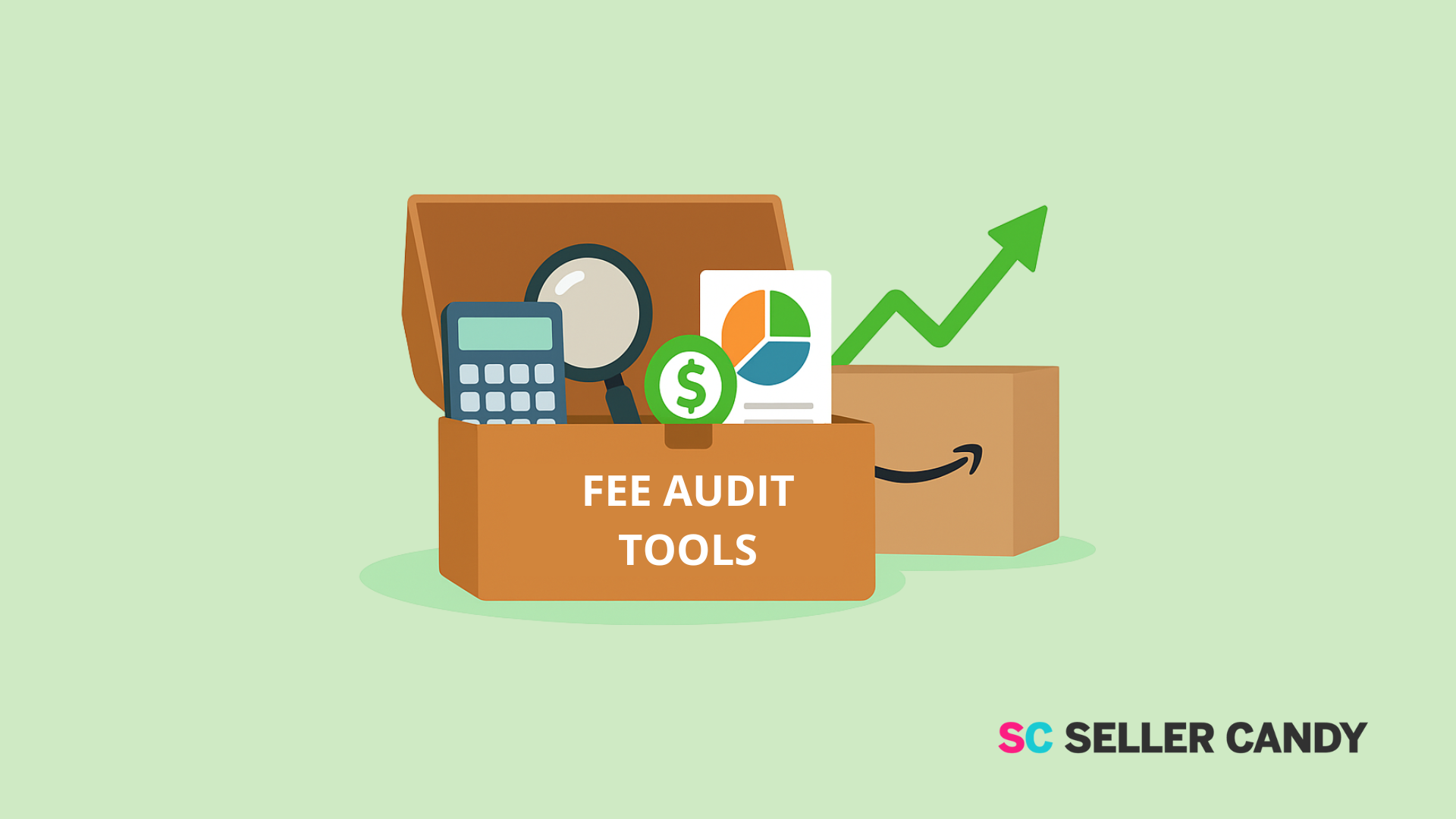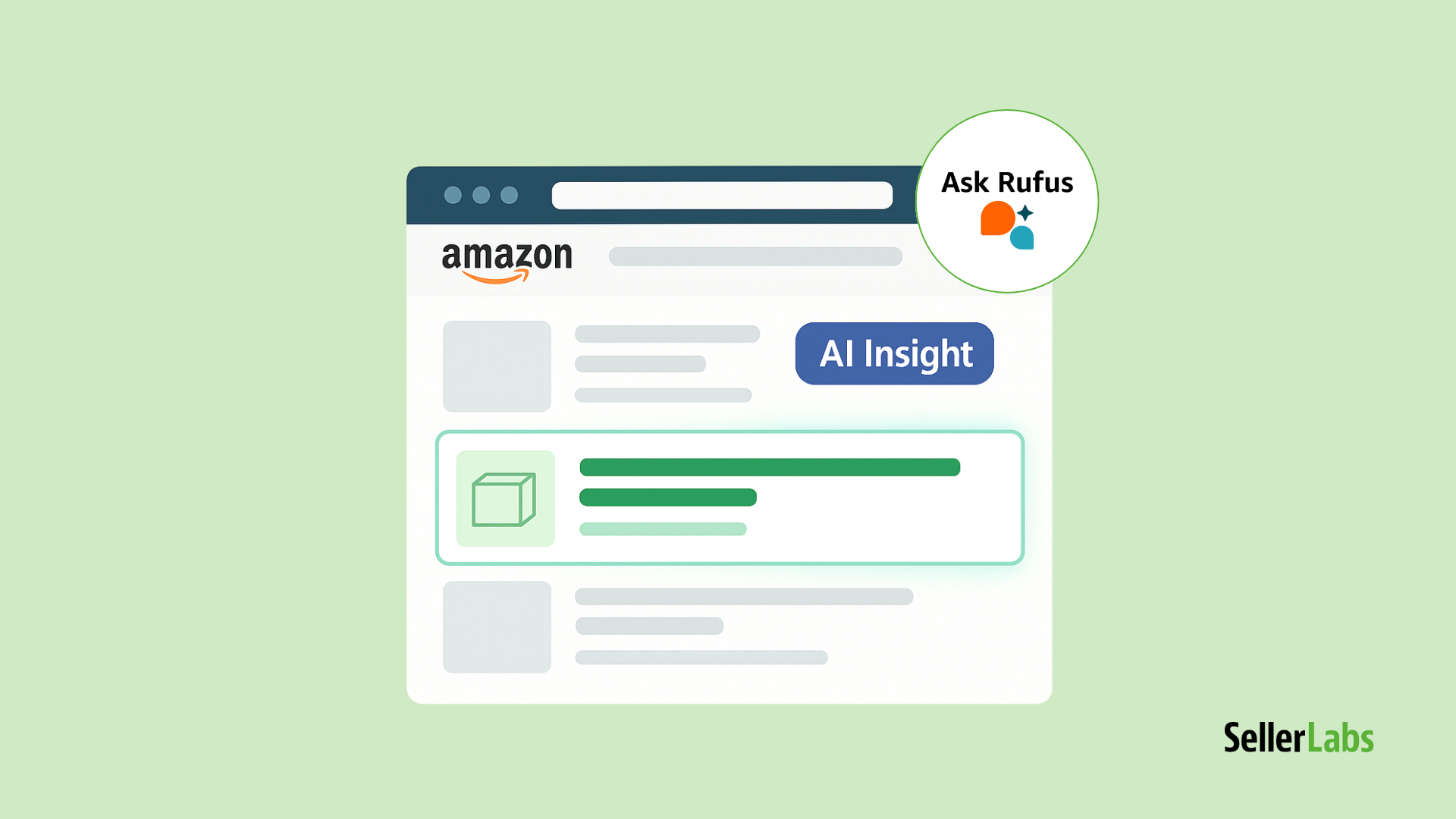
Amazon is a powerful platform for growing your business, but it’s also full of hidden fees that can quietly chip away at your profits.
That’s why regular fee audits matter. They help you catch overcharges, plug profit leaks, and claim money that’s rightfully yours.
In this guide, we’ll walk you through how to audit your Amazon fees step by step, so you can stop losing money and start boosting your bottom line with confidence.
Why Amazon Fee Audits Matter
Amazon’s fee structure is constantly shifting beneath the surface. While they announced no increases to US referral and FBA fees for 2025, other costs are quietly climbing. Inbound placement fees now average $0.27 per standard unit and $1.58 for bulky items, charged 45 days after receipt, and Multi-Channel Fulfillment fees increased 3.5% this year.
The timing couldn’t be more critical with Q4 approaching. Peak season surcharges run from October 15, 2025, through January 14, 2026, stacking on top of your regular fees during the busiest selling period. Plus, Amazon slashed the reimbursement claim window from 18 months to just 60 days, meaning any errors you miss are gone forever after two months.
Regular fee audits ensure your pricing strategy and inventory decisions still make sense under Amazon’s evolving fee structure. Without them, you’re essentially flying blind into peak season, risking your margins when every dollar counts most.

The Fee Categories You Must Monitor
Beyond the obvious referral and FBA fees, dozens of smaller charges can quietly drain your profits if left unchecked. Here are the critical fee categories that deserve your immediate attention during every audit cycle.
1. Referral Fees
While Amazon didn’t raise referral fees for 2025, category mapping errors can still cost you big. Verify each ASIN’s category assignment matches its actual referral rate (8-15% depending on category). Even a single misclassified product can mean paying thousands more than necessary across high-volume SKUs.
2. FBA Fulfillment Fees
These fees depend on accurate size tiers and weights, so confirm your products’ dimensions haven’t been miscalculated. Check if your packaging is pushing items into a higher tier unnecessarily. Even half an inch can bump you to the next fee level, cascading into thousands in extra costs.
3. Storage and Aged-Inventory Surcharges
Monthly storage fees vary by season, with aged-inventory surcharges hitting items stored over 365 days. Amazon takes snapshots on the 15th of each month to assess these fees. Time your inventory movements around these dates to avoid jumping into higher fee brackets.
4. Multi-Channel Fulfillment (MCF)
MCF fees increased 3.5% in 2025 and follow different schedules from regular FBA. If you’re fulfilling Shopify or Walmart orders through Amazon, these higher rates need to be reflected in your off-Amazon pricing. MCF typically costs 30-50% more than standard FBA fulfillment.
5. Promotional and Advertising Fees
Amazon increased coupon and Lightning Deal fees this year, making it crucial to track actual return on ad spend. If your audit shows strong coupon usage but weak conversion lift, you’re essentially paying Amazon to discount your products. Reserve promotions for products with proven offer-to-conversion rates.
6. Reimbursements and Claims
Amazon should reimburse you for lost, damaged, or incorrectly processed inventory, but these reimbursements aren’t automatic. With only 60 days to file claims (down from 18 months), missing this window means permanently losing money. Track inventory discrepancies, return errors, and fulfillment mistakes systematically.
Critical Areas Where Money Leaks Occur
Tired of discovering fees you didn’t know existed? You’re not alone – even pro sellers get blindsided by Amazon’s complex fee structure. Here are the profit killers that most miss until it’s too late:
1. The Vanishing Inventory Problem
Lost and damaged inventory, inbound shipment discrepancies, and mishandled removal orders happen daily across Amazon’s fulfillment network. Your products disappear during receiving, get damaged in storage, or simply vanish between warehouses.
Amazon does reimburse sellers for lost or damaged inventory, but here’s the catch: They rarely reimburse the full amount, and you have to catch these errors yourself within 60 days.
2. Size and Weight Miscalculations
Amazon’s system sometimes records your product dimensions incorrectly, instantly bumping you into a higher fee tier. For large bulky items, fees are calculated based on the greater of dimensional weight or actual weight.
A pillow measured while compressed gets charged as if it’s always fully expanded; suddenly, your $2 fulfillment fee becomes $5, multiplied across thousands of units.
3. The Returns Processing Mess
When customers return items, you might get charged refund administration fees up to 20% of the referral fee or $5. But that’s just the start: Products often come back in perfect condition yet get marked “unsellable,” sitting in limbo while you pay storage fees.
Sometimes Amazon processes refunds but never actually receives the returned item, and you pay the price unless you catch it.

4. Surprise Prep and Labeling Charges
Unplanned service fees occur when inventory arrives at fulfillment centers without proper labeling or packaging. Your supplier forgets poly bags, barcodes aren’t scannable, or boxes arrive damaged. Suddenly, you’re paying $0.30 to $2.00 per unit for Amazon to fix problems you didn’t create!
These prep and labeling fees are particularly painful because they’re completely avoidable with proper preparation.
A Step-by-Step Fee Audit You Can Run Monthly
Running a thorough fee audit doesn’t have to be overwhelming. Break it down into manageable chunks and tackle each area systematically. Here’s a proven monthly audit process that catches the most common (and costly) fee issues before they compound.
Step 1: Calculate Your True Profit Per Product
Pull your last 30-90 days of sales data and calculate actual profit for each SKU. Start with net revenue (price minus promotions), then subtract referral fees, FBA fulfillment costs, storage charges, and any MCF or inbound placement fees.
This gives you the real per-unit profit after Amazon’s entire fee stack; often a sobering number that’s much lower than expected.
Step 2: Verify Size Tiers and Dimensions
Incorrect measurements are profit killers that compound across every unit sold. Compare your products’ actual specs against Amazon’s recorded dimensions and size tiers.
If something looks off, request a re-measurement with photo proof. Dropping even one tier can save hundreds per month on high-volume items.
Step 3: Track Inventory Age Before Surcharges Hit
Since aged-inventory surcharges kick in for items stored over 365 days, map out which ASINs are approaching danger zones. Amazon takes snapshots on the 15th of each month, so schedule removals or run clearance promotions before that date. Missing this window by even a day triggers fees for the entire month.
Step 4: Hunt for Missing Reimbursements
Run a returns report comparing customer refund dates against when items were actually returned to Amazon. Look for refunds without returns, damaged items marked unsellable, and lost inventory during receiving. With only 60 days to file most claims, you need to catch these fast or lose the money forever.
Step 5: Audit Your MCF Pricing Strategy
MCF fees increased 3.5% in 2025, and peak surcharges apply from October 15 through January 14. Confirm your Shopify or website pricing covers these higher costs. If margins are too thin, consider switching slow movers to a cheaper 3PL or adjusting which products qualify for MCF fulfillment.
Step 6: Evaluate Promotional Performance
Pull performance metrics for every coupon and Lightning Deal. Look at conversion rates, incremental revenue, and actual ROAS. With Amazon’s increased promotional fees in 2025, many coupons now cost more than they generate in revenue. Cut underperformers and focus promotions only on products with proven conversion lift.
High-Leverage Fixes to Reduce Amazon Fees Fast
Even if you can’t control every fee Amazon throws your way, there are smart, immediate actions you can take to reduce costs. These quick wins are based on common areas where sellers often lose money without realizing it. Here’s how to plug the leaks and start recovering profit right away:
Optimize Packaging to Drop a Size Tier
Right-sizing your packaging isn’t just good for shipping; it can shift your product into a lower FBA size tier. Even small reductions in dimensions can significantly reduce fulfillment fees across hundreds or thousands of units.
Once you update the packaging, double-check your size tier and confirm the change is reflected in Seller Central to ensure savings show up in the next settlement cycle.
Time Inventory Moves Before the 15th
Amazon takes a snapshot of your inventory on the 15th of each month to calculate aged-inventory surcharges. That means timing matters.
Run removal orders, promote slow sellers, or run outlet deals before that cutoff to avoid paying higher storage fees on aging stock.
Tighten Your Returns Triage
Returns are one of the most common profit leaks. Set up a weekly system to review:
- Refunds issued but no item returned
- Unsellable returns that weren’t reimbursed
- Items damaged at fulfillment centers (FCs)
Make sure to file claims within Amazon’s reimbursement windows. Waiting too long means you may lose the chance to recover funds.
Re-Price or Re-Channel Slow Movers

If you’re losing money on storage or aged-inventory fees, take action:
- Lower the price to move stock faster
- Bundle slow SKUs with high-performers
- Switch fulfillment from FBA to FBM or a 3PL if it makes more financial sense
This is especially important in Q4, when peak rates and surcharges can make slow movers even more costly to keep in storage.
Be Selective With Coupons
Promotions like coupons and Lightning Deals can boost conversions, but they also come with rising fees. In 2025, Amazon increased promo-related costs, so it’s essential to be strategic.
Only use coupons when they actually improve sales and profitability, such as during launches or seasonal events. Otherwise, turn them off and reinvest that budget.
Transform Fee Audits Into Competitive Advantage
You can’t control every Amazon fee, but you can control whether they catch you off guard. A disciplined monthly audit process will uncover profit leaks before they compound into serious losses. Start with your top 20% revenue SKUs, fix the obvious leaks (size tiers, reimbursements, aged stock), and then roll the process across your catalog.
Ready to take control of your Amazon fees? Seller Candy’s experts know where hidden costs hide and how to get your money back. We’ll walk through your account, highlight profit leaks, and show you exactly how our team can recover lost revenue and protect your margins.
Don’t wait: Schedule your free consultation today and start keeping more of every sale.





